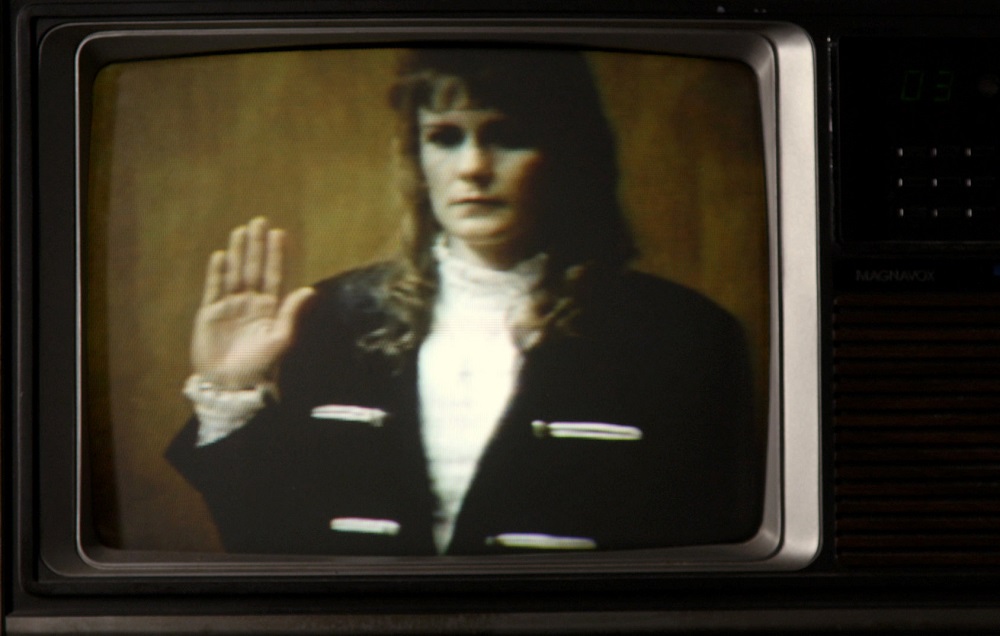By providing your information, you agree to our Terms of Use and our Privacy Policy. We use vendors that may also process your information to help provide our services. This site is protected by reCAPTCHA Enterprise and the Google Privacy Policy and Terms of Service apply.
Beyond ‘Orange is the New Black’: Three New Docs Present Our Judicial System in a Terrifying Light
Eric Kohn

While millions contemplate the perils of prison life in “Orange is the New Black,” there are much darker looks presented in several new documentaries.
In “The Kill Team,” opening today in New York, director Daniel Krauss focuses on the unsettling fate of Private Adam Winfield, the whistleblower who exposed the morbid antics of his platoon in 2010, when it came out that the group had repeatedly murdered innocent Afghanis for sport. Rather than be lauded for his efforts, Winfield became subject to military prosecution for not acting sooner. Krauss captures this cold tragedy with a remarkably intimate look at his family — particularly his ex-military father — as they cope with the possibility of their son doing time in spite of his apparent innocence.
The filmmaker expertly cuts between tender moments and Winfield’s harrowing account of the kill team’s infuriating antics, which the men themselves documented in a slew of grisly photos that deepen the impact of each ghastly anecdote.
The movie’s haunting power stems from a paradox at the heart of its narrative: It evokes major sympathy for its central figure and makes a compelling argument for the miscarriage of justice that resulted in Winfield’s three-year prison sentence. Yet it also demonstrates that several peers committed cold-blooded murder in his presence. When does culpability enter the equation?
That question takes on especially complicated ramifications in “Lost for Life,” currently available on iTunes. Like “The Kill Team,” director Joshua Rofé delivers an unsettling look at young men whose lives are consumed by a system unkind to ambiguity. Rofé’s broader focus is the volume of U.S. prisoners under the age of 17 serving life without parole, but the examples he selects infuse the topic with a grim unease.
Among the cases taken into consideration, Rofé commits the most screen time to Torey Adamcik and Brian Draper. In 2006, they were teens in a small Idaho town when they concocted a plan to stab classmate Cassie Jo Stoddart to death. Rofé includes damning home video footage of the two boys plotting their crime, while they recall in contemporary interviews the inspiration that they culled from the Columbine shootings and from Wes Craven’s “Scream.” Today, at age 21, they don’t sound anything like the psychotically disturbed young murderers witnessed in the footage — but their sentences remain intact.
 Rofé pulls off a tricky balance between evoking sympathy for the young men and foregrounding their evil history. The opening shot is a stunning audiovisual contradiction, as the director slowly pulls back on the grisly image of Stoddart’s bloody body while playing audio recordings of a teary Draper on the phone with his mother in prison.
Rofé pulls off a tricky balance between evoking sympathy for the young men and foregrounding their evil history. The opening shot is a stunning audiovisual contradiction, as the director slowly pulls back on the grisly image of Stoddart’s bloody body while playing audio recordings of a teary Draper on the phone with his mother in prison.
The savvy device forces you to contemplate whether locking up the killer for life solves the problem. Did he get what he deserves, or does the adult man who regrets his childhood acts deserve better? Unable to provide an answer, “Lost for Life” presents that question with fascinating layers of inquiry. (Disclosure: “Lost for Life” was released by SnagFilms, Indiewire’s parent company.)
But it’s not just young men who may be shortchanged by the judicial process. In “Captivated: The Trials of Pamela Smart,” which HBO debuts August 18, Jeremiah Zagar surveys the media brouhaha in 1990 when its subject was sentenced to life in prison for hiring a teenager to kill her husband. Turned into a seductive caricature by Nicole Kidman in Gus Van Sant’s 1995 drama “To Die For” in addition to a TV movie that aired prior to her trial, Smart’s fate was ultimately determined by the reality-show circus that framed her case. The truth of what actually happened after she dumped the high school student who ultimately committed the crime is much fuzzier — so fuzzy, in fact, that even one of the accomplices to the murder who appears in the movie seems to have confused the events with their fictional manifestations.
 Yet Zagar finds the real Smart behind bars, after she has completed several degrees and explored a creative writing class, speaking coherently about the forces that worked against her. Whether she’s actually guilty, Zagar successfully combats the images of her past with more candid ones from the present.
Yet Zagar finds the real Smart behind bars, after she has completed several degrees and explored a creative writing class, speaking coherently about the forces that worked against her. Whether she’s actually guilty, Zagar successfully combats the images of her past with more candid ones from the present.
That’s the power each of these movies bring to a discussion with no easy answers. Without solving the problems of wrongful prison sentences — or even determining whether they’re solvable — they clarify the issue by focusing on the looks on their subjects’ faces. The evidence for a better process is right there on screen. It’s up to viewers to make sense of it.
By providing your information, you agree to our Terms of Use and our Privacy Policy. We use vendors that may also process your information to help provide our services. This site is protected by reCAPTCHA Enterprise and the Google Privacy Policy and Terms of Service apply.
Most Popular
You may also like
















